As you go through life with your furry feline friend by your side, your idea of a vet visit may be an annual exam that only takes an hour or two out of your day. However, what happens when your vet tells you your cat needs to stay overnight? It can be an unexpected turn of events that may cause you to wonder, “How much will this cost?”
Unfortunately, there’s no simple answer to the question. The cost of an overnight vet stay will depend on your location, the reason, and the vet facility involved. To help you get a better understanding of what the costs might entail, keep reading for our deep dive into overnight stays at the vet.
The Importance of Leaving Your Cat Overnight At The Vet
When it comes to our beloved pets, we don’t like to leave them for long, especially in a strange environment. You may feel that no one can care for your special kitty as well as you can. However, there are certain cases where a professional touch is required. If your cat needs IV fluids or special medications, they must stay at the clinic.
If they are undergoing testing and need constant supervision, it is wise to have professional monitoring of your cat to detect any adverse signs. What if a sudden change of condition in your cat calls for quick action and special equipment? It’s best for your pet to be onsite should any of these situations arise. It could make the difference between life and death.

Reasons for An Overnight Vet Visit
Wondering when you would have to leave your cat overnight? Below are some situations where a quick day visit isn’t enough.
Emergency Care
As one of the most common reasons for leaving your cat at the vet’s office overnight, emergency care is the nightmare cat owners try to prepare for but don’t want to imagine. Whether it’s a traumatic accident or food poisoning, there may come a day when your cat needs immediate treatment that goes beyond a simple prescription.
Surgery
If your cat needs a surgical procedure that opens up a body cavity, they should stay at least one night for proper care and supervision. Depending on their age, overall health, and the type of surgery, they may have to stay even longer.
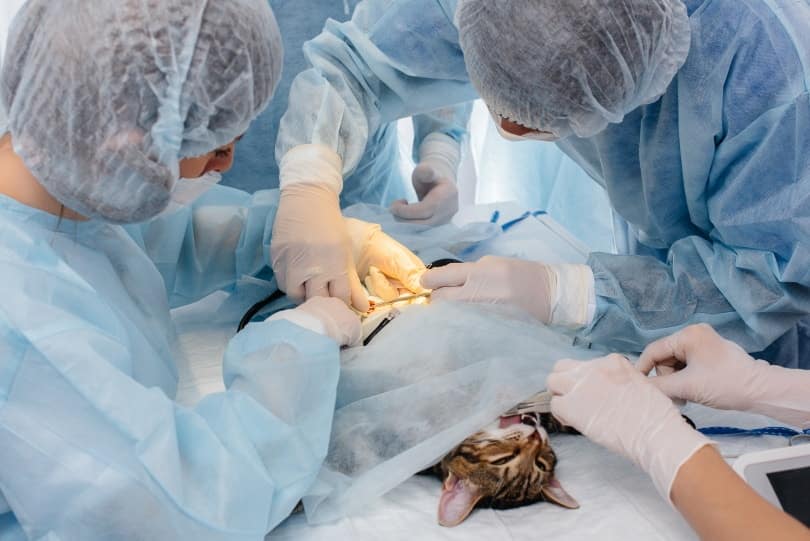
Post-operative care
After surgery, your cat is vulnerable to complications and infections, so round-the-clock monitoring is sometimes required. They may also need medications that you can’t administer. In that case, they should stay with the vet until they can safely return home.
Minimize travel stress
If your cat needs to visit the vet multiple days in a row, it may be easier for them to stay there and avoid the stress of traveling back and forth every day. You know your cat best and how they will handle changes to their lifestyle and the added travel. Staying in a new environment may outweigh the stress and anxiety of constantly being on the move.
Scheduling
Does your cat have a procedure scheduled early the next morning? Instead of dragging yourself (and your cat) out of the house at a ridiculous hour, taking them to the office the night before can be much easier. That gives them time to acclimate to their surroundings and the people taking care of them. Hopefully, they will be in a more relaxed state when it comes time to be treated.
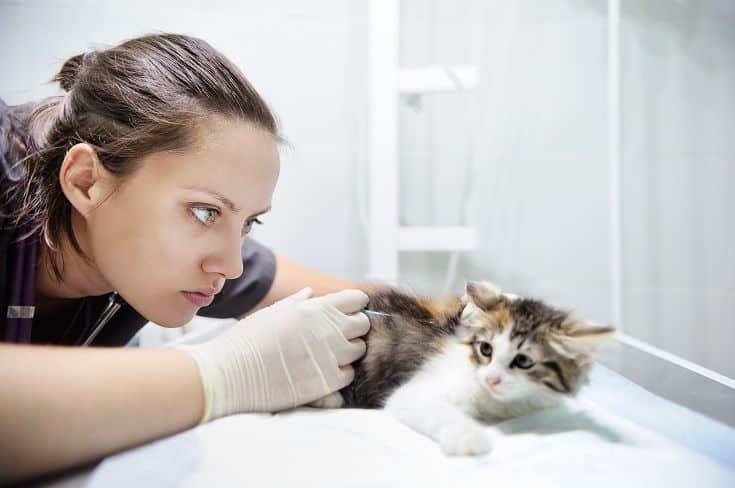
Quarantine
In the unfortunate case that your cat isn’t vaccinated for rabies and got bitten by a rabid animal, the choices are euthanasia or quarantine. This is a more severe, long-term situation where your pet must be quarantined and monitored for four months. Fortunately, this is not a common occurrence due to most cat owners getting their pets vaccinated.
How Much Does Leaving Your Cat Overnight at The Vet Cost?
The cost to keep your cat overnight at the vet’s office can vary greatly depending on what needs to be done during their stay. For example, if your cat is getting emergency care, they may need blood work, x-rays, wound treatment, or even emergency surgery. In other cases, they may need IV fluids all night to combat severe dehydration or testing to reach a diagnosis.
Because of all the variables, there is no concrete answer to how much it will cost, and you will need to talk to your vet to find out precisely what they charge and why. But be aware the bill can add up very quickly and cost more than you anticipated.
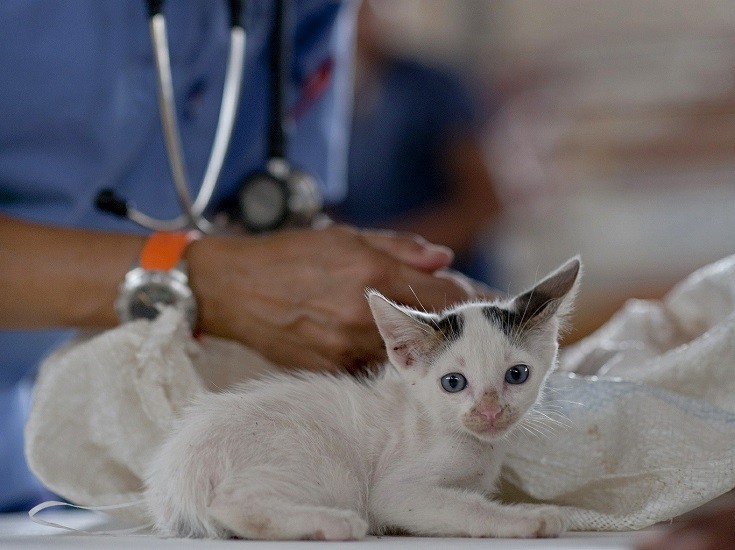

Price Range of Overnight Vet Care
Prices vary greatly when it comes to overnight vet care, and the location plays a big part. Veterinarians in cities usually charge more than a small, rural practice. However, the larger vet hospitals in urban areas will also have the necessary resources to handle all kinds of emergencies.
Below, we will look at prices by region to give you a better idea of what you may encounter.
East Coast
Artemis Veterinary Emergency & Specialty Services Gainesville, Virginia
- 24-hour hospitalization with IV fluids and meds: $1,200
- Diagnostics (bloodwork, radiographs, etc.): $20–$250 each
- Emergency visit: $90–$120
- Anesthesia and surgery: $3,000–$4,000
Midwest
Animal Care Center Cincinnati, Ohio
- Overnight stay with testing and treatment: $2,200
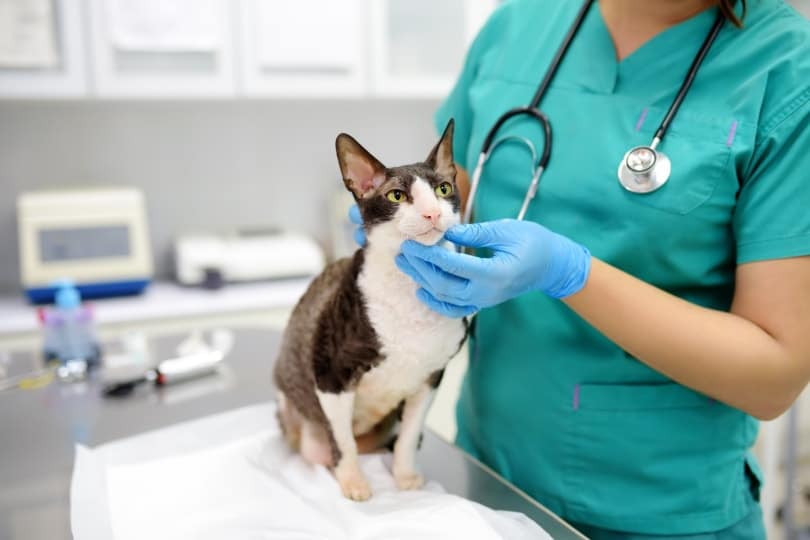
West Coast
Affordable Animal Hospital Los Angeles, California
- Radiographs: $135–$150 for two views
- Pre-op blood test: $80
- Anesthesia: $45–$85
- Exploratory surgery: $900 and up
- Mass removal: $150 and up
Additional Costs to Anticipate
Whether planned or not, you never know what can happen when it comes to vet visits. Simple X-rays can turn into emergency surgery. Odd signs can lead to a night of tests.
During a routine exam, the vet may want to do bloodwork, which could cost anywhere from $80 to $150. Your cat may need medication while there and more after returning home. If you know that diagnostics will be necessary, plan on spending at least $150–$200. Unfortunately, you won’t know how much everything will cost until your vet tells you exactly what your cat needs.
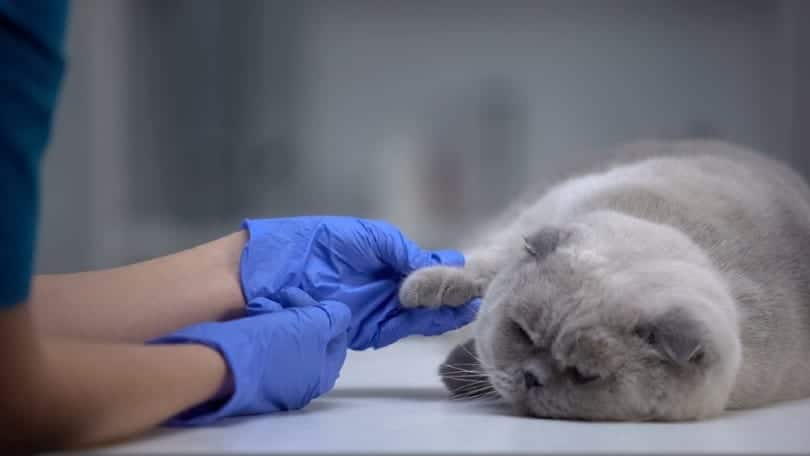
How Often Should I Expect My Cat to Stay Overnight at the Vet?
Ideally, an overnight vet stay will be a rare occurrence for your cat. If they are healthy and receive regular veterinary care, you most likely won’t have to deal with this situation. However, unforeseen conditions and accidents happen, so it’s good to be prepared for anything—even if it has never happened to your furry friend.
As your cat ages, you may be dealing with health issues that didn’t exist in their younger years. Your cat’s age, breed, and lifestyle can affect their likelihood of long stays at the vet.
Does Pet Insurance Cover Overnight Vet Costs for Your Cat?
Yes, pet insurance covers many of the costs associated with an overnight stay at the vet’s office. Embrace Pet Insurance covers emergency and surgical procedures, dental treatment, and hospitalization. They don’t cover preexisting conditions, however.
Another popular insurance company, Healthy Paws Pet Insurance, reimburses up to 90% of vet costs and covers routine care, emergency care, alternative treatment, and hereditary conditions. They also don’t cover preexisting conditions.
An important thing to know about pet insurance is that most don’t pay upfront and only reimburse after the fact. That means you are still responsible for forking over the full amount before your cat receives treatment.

What To Do To Prevent Or Prepare For Overnight Vet Costs
As pet owners, we hate being surprised by the unexpected, but we can make a game plan beforehand. Regular vet visits ensure your cat is healthy and any issues are detected. Good food and care go a long way to preventing severe health conditions.
Find a vet that you trust so that if the time comes for an extended stay, both you and your cat are as comfortable as possible. Finally, ensure your finances are in order, and you have the necessary resources. Pet insurance may be a good option, or you can discuss payment plans with your vet. You may not be able to control everything in life, but you can have peace of mind from good preparation.
Conclusion
An overnight stay at the vet doesn’t usually happen often, but some circumstances call for it. Emergency care, surgery, post-operative care, and travel stress are all valid reasons to leave your precious kitty in the hands of professionals. Unfortunately, the treatments and care will determine the cost of their stay, and the bill can add up quickly.
You may want to consider pet insurance, discuss payment plans with your vet, and save money for any kitty emergencies. There is no way to predict the future, but you can prepare for it as much as possible.
Featured Image: Kzenon, Shutterstock
Contents
- The Importance of Leaving Your Cat Overnight At The Vet
- Reasons for An Overnight Vet Visit
- How Much Does Leaving Your Cat Overnight at The Vet Cost?
- Price Range of Overnight Vet Care
- Additional Costs to Anticipate
- How Often Should I Expect My Cat to Stay Overnight at the Vet?
- Does Pet Insurance Cover Overnight Vet Costs for Your Cat?
- What To Do To Prevent Or Prepare For Overnight Vet Costs
- Conclusion














